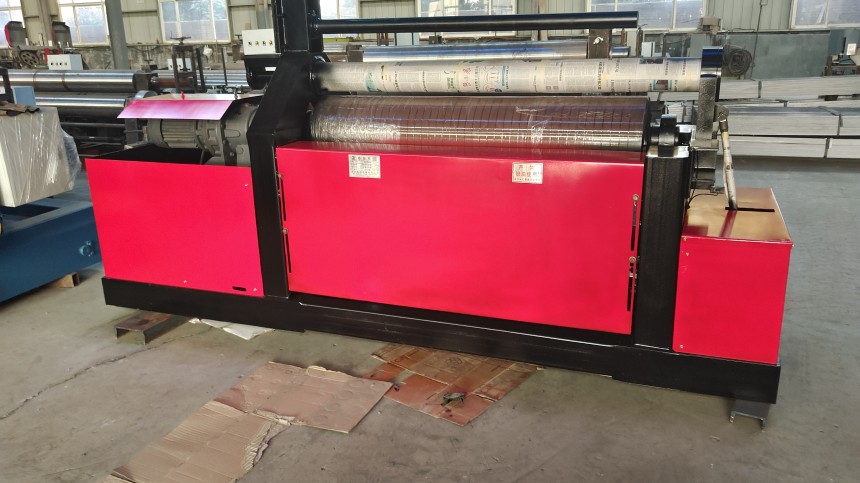

With over 10 years of experience in the professional manufacture of plate rolling machines, we are now pleased to introduce the key points of the process for rolling special metal materials:

Special metal materials, due to their unique physical and chemical properties, have widespread applications in fields such as aerospace, energy equipment, and medical devices. However, these materials are prone to issues such as cracks, springback, and surface scratches during rolling processing, placing higher demands on process control. Mastering the core principles of rolling special metals is key to ensuring processing quality.
1. Material properties and pre-treatment
Specialty metals typically refer to materials with unique properties, such as titanium alloys, high-temperature alloys, and high-strength aluminum alloys. Prior to processing, three key properties must be carefully considered:
Differences in ductility: For example, titanium alloys have only 60% of the ductility of ordinary steel at room temperature, so bending radii must be strictly controlled.
Springback tendency: Nickel-based alloys can exhibit springback values exceeding twice that of low-carbon steel, necessitating the inclusion of compensation allowances.
Surface sensitivity: Scratches on the surface of zirconium materials significantly reduce corrosion resistance, so full protection is required throughout the process.
Pre-treatment steps include:
Checking the rolling direction pattern when accepting materials to avoid delamination caused by transverse bending.
Annealing hard materials, such as TC4 titanium alloy, which needs to be heated to 700°C and held for 1 hour.
Use nylon padding or PVC film as protective material to prevent scratches during rolling.
2. Equipment selection and parameter settings
The performance of the rolling machine directly affects the processing results of special metals. The following configurations should be considered:
Roll shaft material: For processing stainless steel, Cr12MoV alloy steel rolls are preferred, with a surface hardness of HRC58 or above.
Drive method: Servo motor-driven four-roll rolling machines are more suitable for variable curvature processing than mechanical ones.
Auxiliary device: The laser rangefinder can monitor the curvature radius in real time and automatically shut down and correct when the error exceeds 5%.
Key parameter setting principles:
The initial feed rate should not exceed 2 m/min. For difficult-to-deform materials such as titanium alloys, it is recommended to reduce the feed rate to 0.8 m/min.
The gap between the upper and lower rolls should be set to 1.1 times the material thickness. For example, for a 3 mm thick plate, the gap should be set to 3.3 mm.
For materials such as high-strength steel, the pressure should be increased in stages, with each increase not exceeding 15% of the total pressure.
3. Key points of process control
Multi-pass forming
Special metals usually require 3-5 rolling passes to achieve the target curvature. For example, the initial bending angle of Inconel 718 alloy is controlled within 30°, with each subsequent pass increasing by 20°. Each pass must be followed by natural aging for more than 2 hours to release internal stress.
Temperature Control
Cold rolling applicable materials: 316L stainless steel, 5083 aluminum alloy, etc.
Hot rolling prerequisites: TA15 titanium alloy must be preheated to 550°C, and the heating zone width should be greater than the bending zone by 20 mm.
Warm rolling precautions: Magnesium alloy should be maintained at 200–250°C; temperatures exceeding 300°C may cause fire hazards.
Defect prevention measures
End cracks: Leave a 50mm straight edge section at both ends of the sheet, which will be removed after forming.
Cross-sectional distortion: For thin-walled tubes (t/D < 0.02), fill with quartz sand before rolling.
Edge phenomenon: A 0.2 mm radius is machined on the surface of the roller shaft to avoid stress concentration.
4. Post-processing and inspection
Special metal parts after forming must undergo three key treatments:
Stress annealing: For example, GH4169 alloy parts must be treated in a vacuum furnace at 650°C for 4 hours.
Dimension correction: Use a multi-point hydraulic forming machine to correct local springback, with tolerances following GB/T 1804-m grade standards.
Surface treatment: Electrolytic polishing can remove the 0.05 mm machining-altered layer from the surface of nickel-based alloys.
Inspection items include:
Curvature radius detected using a 3D scanner, with an allowable deviation of ±0.5%
Ultrasonic flaw detection to check for internal cracks, with defect equivalent diameter not exceeding 0.8 mm
Grain phase analysis to confirm no abnormal grain growth in the heat-affected zone
5. Typical problem solutions
Titanium alloy roll cracking: Replace the lower roll with a polyurethane-coated roll to reduce contact stress by 30%.
Stainless steel sticking roll: Spray molybdenum disulfide lubricant once every 10 pieces processed.
Aluminum alloy orange peel texture: Control the deformation amount per pass to within 8%, with the rolling direction at a 45° angle to the bending axis.
The essence of special metal coil processing lies in the precise matching of material properties and process parameters. Through scientific material selection, precise control, and rigorous inspection, high-precision forming can be consistently achieved. With the development of intelligent detection technology, real-time adaptive adjustment will become the primary direction for future process optimization.
If you are interested in plate rolling machines, please contact us.
 Address:Room 1202, Detaitang Building, No. 118 Huaguang Road, Zhangdian District, Zibo, Shandong
Address:Room 1202, Detaitang Building, No. 118 Huaguang Road, Zhangdian District, Zibo, Shandong WhatsApp:+8615653328535
WhatsApp:+8615653328535 Wechat: +8615965331535
Wechat: +8615965331535  E-mail:zs@sdsmachinery.com
E-mail:zs@sdsmachinery.com